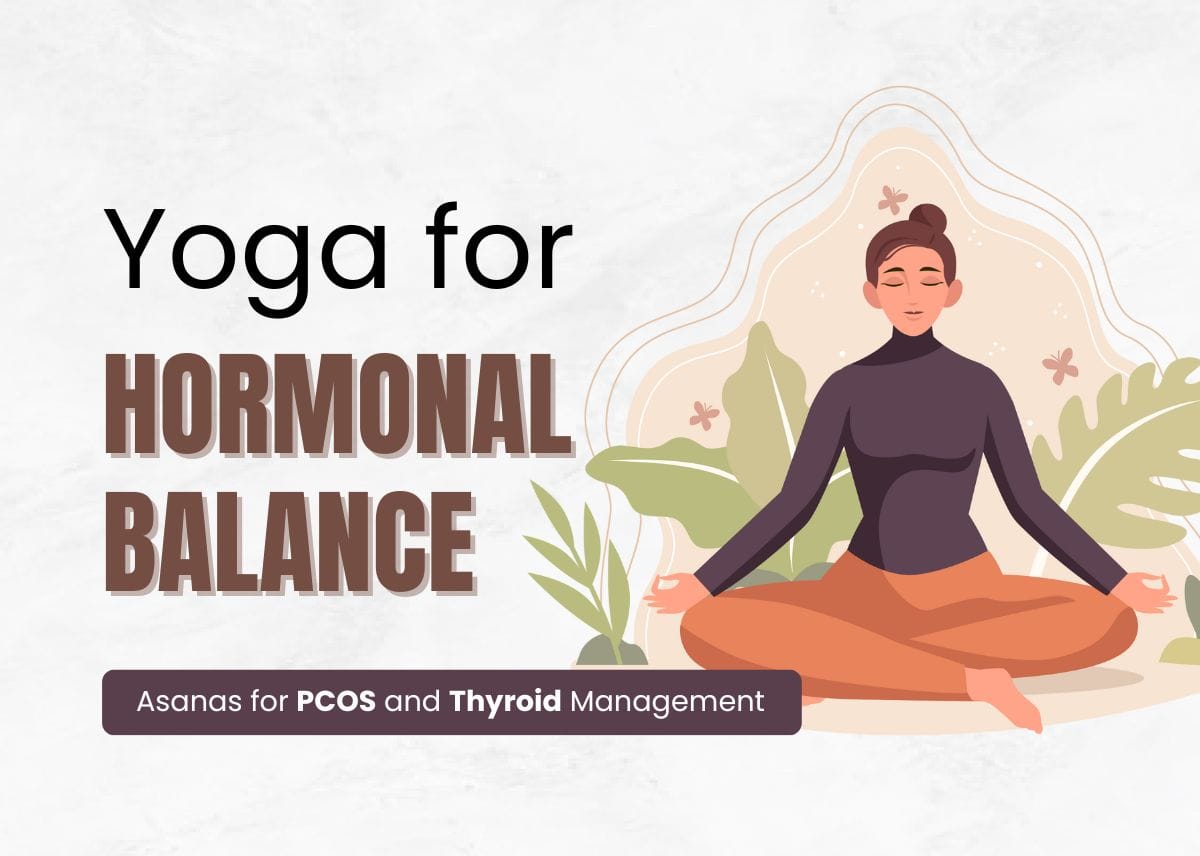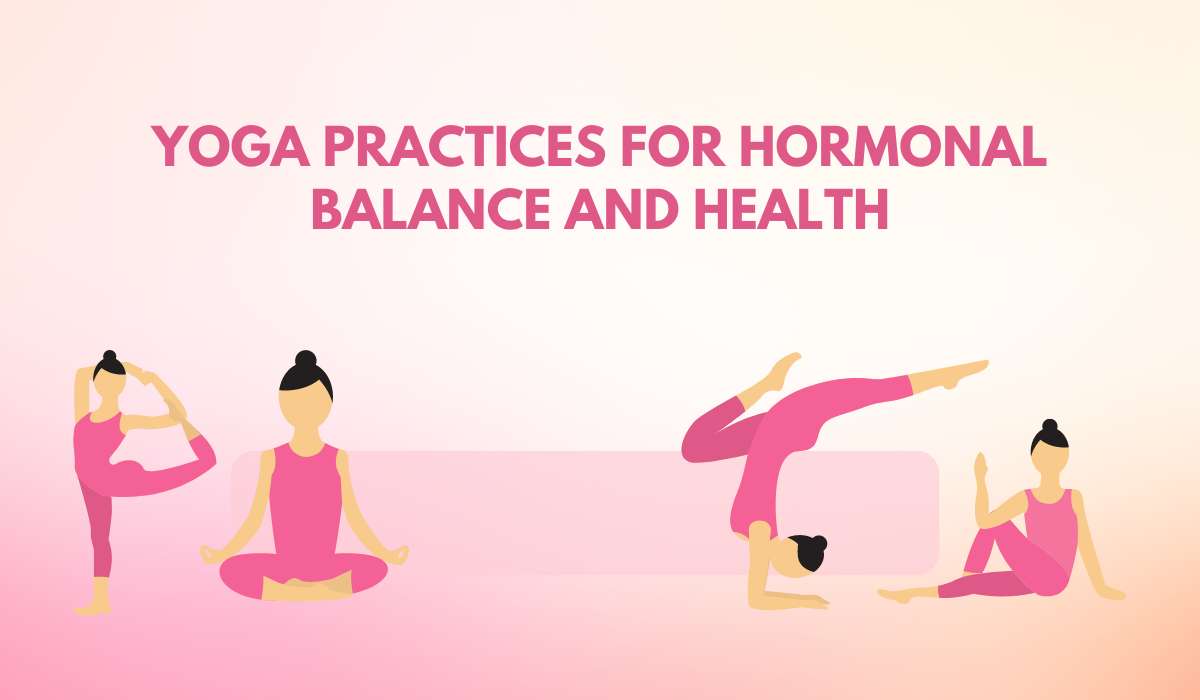Yoga Practices for Hormonal Balance and Health. Whether you are struggling with hormonal imbalances or simply looking to maintain optimal hormonal health, incorporating yoga into your daily routine can bring about incredible benefits.
In this article, we will explore various yoga poses, breathing techniques, meditation practices, and lifestyle tips that can help you achieve hormonal harmony. By incorporating these practices into your life, you can support your body’s natural processes and promote overall well-being.
Understanding the importance of hormonal balance is crucial. Hormones play a vital role in regulating various bodily functions, including metabolism, mood, sleep, and reproductive health. When hormones are imbalanced, it can lead to a range of symptoms such as fatigue, weight gain or loss, mood swings, and irregular menstrual cycles.
By practicing specific yoga poses, engaging in controlled breathing techniques, and fostering a calm, meditative state of mind, you can nurture your hormonal system and restore balance to your body. Additionally, adopting a healthy lifestyle, including proper nutrition and stress management, can further enhance your hormonal wellness journey.
Join us as we delve into the world of yoga practices for hormonal balance and health, and discover the transformative power that lies within.
Understanding Hormonal Balance and Health

Understanding hormonal balance and health is crucial for maintaining overall well-being. Hormones are chemical messengers in your body that regulate various functions such as metabolism, mood, sleep, and reproductive health. When these hormones are in balance, you feel energized, stable, and vibrant.
However, hormonal imbalances can lead to a range of symptoms that affect your daily life. Fatigue, weight fluctuations, mood swings, and irregular menstrual cycles are just a few examples.
Hormonal imbalances can be triggered by factors such as stress, poor diet, lack of exercise, and environmental toxins. By understanding the importance of hormonal balance, you can take proactive steps to support your body’s natural processes.
Yoga practices can play a significant role in restoring hormonal balance. Through specific poses, breathing techniques, and meditation practices, you can stimulate and nourish your endocrine system, which is responsible for hormone production. By incorporating yoga into your routine, you can promote hormonal harmony, enhance your overall health, and find balance in your body and mind.
Key Yoga Poses for Hormonal Balance
To support hormonal balance, there are specific yoga poses that can be highly beneficial. These poses activate and stimulate the endocrine system, which plays a crucial role in hormone production.
- Bridge Pose (Setu Bandhasana): This pose gently massages the thyroid gland, helping to regulate metabolism and balance thyroid hormones.
- Supported Shoulderstand (Salamba Sarvangasana): This pose increases blood flow to the thyroid and parathyroid glands, supporting hormonal balance and boosting energy levels.
- Legs-Up-The-Wall Pose (Viparita Karani): By reversing the blood flow in the body, this pose helps regulate blood circulation and reduces stress on the adrenal glands, promoting hormonal harmony.
- Child’s Pose (Balasana): This restorative pose activates the parasympathetic nervous system, reducing stress and cortisol levels, which helps rebalance hormones.
- Cobra Pose (Bhujangasana): Cobra pose opens up the chest and stimulates the ovaries, improving reproductive function and balancing hormones.
Incorporating these key yoga poses into your practice can nourish and support your endocrine system, promoting hormonal balance and overall well-being. Remember to listen to your body and practice these poses with awareness and intention.
Breathing Techniques for Hormonal Health
Breathing techniques are an essential component of yoga practices for hormonal health. They help regulate hormone levels, reduce stress, and promote overall well-being.
One powerful technique is Nadi Shodhana, also known as alternate nostril breathing. This technique balances the energy in your body and supports the proper functioning of hormonal glands.
To practice Nadi Shodhana, sit in a comfortable position and close your eyes. Use your right thumb to close your right nostril and inhale deeply through your left nostril. Then, close your left nostril with your ring finger and exhale through your right nostril. Repeat this cycle for several rounds, focusing on a slow and steady breath.
Another effective technique is Kapalabhati, or “Skull Shining Breath.” This dynamic breathing exercise helps cleanse the respiratory system and invigorate the body. Sit up straight, take a deep inhale, and then forcefully exhale through the nose, generating quick and powerful exhalations while the inhale happens naturally. Start with a few rounds and gradually increase the duration.
By incorporating these breathing techniques into your yoga practice, you can enhance hormonal balance and promote greater health and vitality.
The role of pranayama in hormonal balance
Pranayama, or yogic breathing techniques, play a crucial role in maintaining hormonal balance. By engaging in pranayama regularly, you can regulate hormone levels and support the overall functioning of your endocrine system.
The deep, controlled breaths involved in pranayama help activate the parasympathetic nervous system, also known as the “rest and digest” mode. This calms your body and reduces stress levels, which is essential for hormone regulation.
Specific pranayama techniques, such as Nadi Shodhana (alternate nostril breathing) and Kapalabhati (skull shining breath), stimulate and balance the energy flow in your body. By channeling your breath in a specific pattern, you can activate and support the proper functioning of your hormonal glands.
Regular practice of pranayama also enhances oxygenation and blood circulation, ensuring that essential nutrients reach your glands and organs. This improved blood flow to the endocrine system promotes hormonal balance and overall well-being.
Incorporating pranayama into your yoga practice, even for a few minutes a day, can have a profound impact on your hormonal health. So, take a deep breath, connect with your breath, and let the power of pranayama harmonize your hormones.
Meditation Practices for Hormonal Harmony

Meditation is a powerful practice that can bring hormonal harmony to your body. By incorporating meditation into your daily routine, you can reduce stress and promote hormonal balance.
One effective meditation technique for hormonal health is mindfulness meditation. Sit in a comfortable position, close your eyes, and focus your attention on the present moment. Allow your thoughts to come and go without judgment. This practice can help reduce the production of stress hormones, such as cortisol, which can disrupt hormonal balance.
Another beneficial meditation technique is guided visualization. Imagine a peaceful and harmonious environment, such as a serene beach or a lush forest. Visualize yourself surrounded by positive energy and feel the balance and calmness flowing through your body. This visualization can activate your body’s natural healing ability and promote hormonal harmony.
Breathing meditation is also beneficial for hormone regulation. Focus on your breath, taking slow and deep inhales and exhales. This practice activates the parasympathetic nervous system, which can help reduce stress and promote hormonal balance.
Incorporating these meditation practices into your daily routine can have a profound impact on your hormonal health. Take the time to quiet your mind, connect with your inner self, and promote harmony within your body.
Meditation for reducing stress hormones
To reduce stress hormones, such as cortisol, you can engage in specific meditation practices. Start by finding a quiet and peaceful space where you can sit comfortably. Close your eyes and focus your attention on your breath. Inhale deeply through your nose, feeling your belly rise, and exhale slowly through your mouth, feeling your body relax. As you continue this breathing pattern, envision the stress leaving your body with each exhale.
Another technique you can try is called body scan meditation. Begin by bringing your attention to your feet and gradually move it up through your body. Pay attention to any areas of tension or discomfort and imagine releasing that tension as you exhale. This practice helps to reduce the physical manifestations of stress and promotes overall relaxation.
You can also incorporate positive affirmations during your meditation practice. Repeat simple phrases to yourself, such as “I am calm and at peace” or “I release stress and invite balance.” These affirmations help to reprogram your mind and create a sense of calmness.
By incorporating these meditation techniques into your daily routine, you can effectively reduce stress hormones and promote hormonal balance in your body.
Lifestyle Tips for Hormonal Wellness
To maintain hormonal wellness, it is important to adopt a healthy lifestyle. Here are some tips to help you achieve hormonal balance:
- Prioritize Sleep: Getting enough quality sleep is crucial for hormonal health. Aim for 7-9 hours of uninterrupted sleep each night to support hormone regulation.
- Eat a Balanced Diet: Focus on consuming whole, nutrient-rich foods like fruits, vegetables, lean proteins, and healthy fats. Avoid processed foods, sugary snacks, and excessive caffeine.
- Manage Stress: Chronic stress can disrupt hormone production. Incorporate stress-reducing activities into your daily routine, such as meditation, yoga, or relaxation techniques.
- Exercise Regularly: Engage in regular physical activity to improve hormone function. Find activities you enjoy, such as walking, swimming, or dancing, and aim for at least 30 minutes of exercise most days of the week.
- Limit Alcohol and Caffeine: Alcohol and caffeine can disrupt hormone production and affect sleep patterns. Moderation is key, so limit your intake of these substances.
- Maintain a Healthy Weight: Excess body weight can impact hormone production. Strive for a healthy weight through a combination of balanced eating and regular exercise.
By implementing these lifestyle tips, you can support hormonal wellness and promote overall well-being.
Conclusion of Yoga Practices for Hormonal Balance and Health
Incorporating yoga practices into your routine can greatly benefit your hormonal balance and overall health. Yoga poses, such as Child’s Pose, Bridge Pose, and Cobra Pose, can stimulate the endocrine glands and regulate hormone production. These poses also promote relaxation and reduce stress, which is essential for hormonal harmony.
Pranayama, or breathing techniques, play a crucial role in balancing hormones. Techniques like Alternate Nostril Breathing and Ujjayi Breathing can calm the mind, reduce cortisol levels, and enhance hormone regulation.
Meditation is another powerful tool for hormonal health. By practicing mindfulness and focusing on the present moment, you can reduce stress hormones, improve immune function, and support overall well-being.
In addition to these practices, maintaining a healthy lifestyle is paramount for hormonal wellness. Prioritize sleep, eat a balanced diet, manage stress, exercise regularly, and limit alcohol and caffeine intake to optimize your hormonal balance.
Remember, achieving hormonal wellness is a holistic journey that requires consistent effort and self-care. By incorporating yoga, breathing techniques, meditation, and healthy lifestyle habits, you can achieve hormonal balance, enhance your well-being, and live a harmonious life.
For More Blogs visit Aerns

